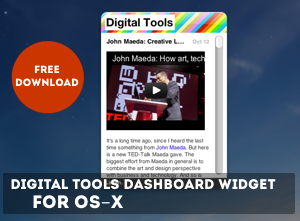There are lot’s of homebrew stuff out there. We digged a lot and present here the best homebrew software aka tools. Enhance your portable device and change it into a usable, multi-purpose device.
Another interesting gameplay ahead with the game Portal. Innovative gaming seems to slowly overcome the market, although I still think that still most of the commercial games are some kind of bloodless (if you take it literally this is clearly a good thing, but on a meta level this games don’t seem to communicate much). This is very fast opinion though on Portal, in fact I did not even played Portal, but it looks very first person shooter-like, just with puzzle elements and different game mechanics. Nevertheless interesting game mechanics, though.
There are kind of demos, that are even in the demoscene very unappreciated: so called demos in “Text Mode“. Text Mode demos are derived from ASCII-art that went through mailboxes. As ASCII-art developed from building simple scenes to “simulating” graphics with ASCII also animations were build.

Picture from Wikipedia
It is very amazing to see virtual worlds and videoclips with great 3D-effects made just with colored texts and is in fact a special form of computer-based art, best described as animated ASCII art. The website TMDC (literally for Text Mode Demo Contest!) features a competition every year and they make it for ten years now. The prices last year were not that spectacular, but they are searching for new sponsors! There is also a 5 Minutes interview with Jari Komppa available who manages this competition. The TMDC X will be from 11.11.2007 – 12.12.2007.

Screenshot from Devious by Traction
For a better future I would want more awareness and better prices for Text Mode demo, that are jewels of computer-based art made within nice constrains, unveiling real demoscene power. The complete archive of the Text Mode Demo Contest is available on Pouet.net

A very lovely Amiga retro trip information site is Lemon Amiga. They not only deliver information on all Amiga models that has been release, but also come along with a cute and very well complete pixel-styled website with all informations, screenshots, scanned boxes, old advertisements, cheats, manuals, reviews and other stuff on all Amiga games. Ever stuck in an Amiga game and could not go through to the end? Then endings.lemonamiga is for you. Get your nostalgic trip now!


Second picture by Sargant.
This entry is about a very special topic on user interface design – it’s about the labeling of (volume) controls on analog and digital boxes. Ordinary volume controls are labeled with numbers just from 0 to 10, well I guess because we have ten fingers and generally live in a decimal system. Now why are there knobs going to eleven? The origin is going back to a rockumentary video made by the reality/parody band The Spinal Tap back in 1984. In this video Nigel Tufnel speaks about their Marshall amps that have a very clever feature, because all volume controls are labeled from 0 to 11. Opposed to the ordinary Guitar player who plays at the maximum volume with all controllers turned up to ten they are able to turn their amps “one more louder” – up to eleven. See the originating part of the video below.
Up to eleven became a synonym for “to the maximum level” or “taking it to the extreme” and lots of nice and interesting stories are wrapped around that parody video, that still influences the user interfaces of mostly musical gear. Read much more and a comprehensive list of 11-appearances at the Wikipedia site.
[via]

N3D mesh example
Groundbreaking news on Nintendo DS homebrew development! Peter Schraut wrote an library in his own words “an abstraction layer for the Nintendo DS 3D hardware, to
be used with the homebrew devkitPro toolchain. The interface is designed to
be very similar with Microsoft’s Direct3D API”. The documentation is available and on the official website some examples waiting to be explored (also look here).

N3D code example
[via]

rails.rivva.de
Frank Westphal (note that interview I held with him) started some months ago a project called Rivva – a “Meme-Tracker” that automatically aggregates content from blogs and sorts it in order to relevance with some algorithmic voodoo hidden inside the application. Rivva now became a new child: rails.rivva.de. That new section focuses on English blogs with debates on Ruby on Rails. To keep in touch with what’s hot on the blogs just visit rails.rivva.de or directly subscribe to the RSS-feed. A fresh source to start the day.


